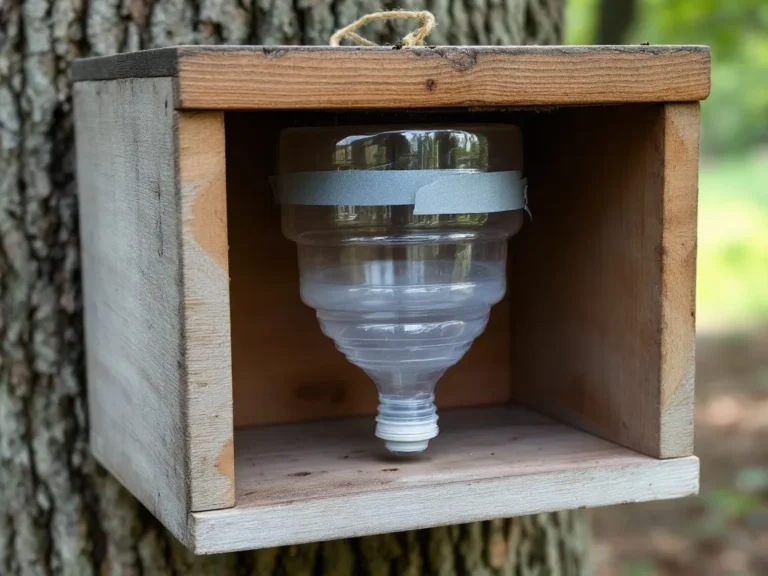Carpenter bees can cause significant damage to wood structures by boring holes to create nests. While they play a vital role in pollination, their burrowing behavior can be a nuisance for homeowners. A natural and effective solution to manage carpenter bees is using citrus spray. This eco-friendly method deters bees without harming them, making it a popular option for people seeking a non-toxic approach to pest control.
In this guide, we’ll walk you through the process of creating your own citrus spray and how to apply it effectively for carpenter bee control.
Why Use Citrus Spray?
Citrus sprays are a natural repellent that carpenter bees dislike due to their strong scent. The acidity in citrus fruits irritates the bees, making them avoid areas treated with the spray. Citrus oils are also safe for humans, pets, and the environment, which makes them an excellent alternative to harsh chemical pesticides.
Key Benefits of Citrus Spray:
- Natural and non-toxic
- Safe for the environment, pets, and children
- Easy and affordable to make
- Effective as a carpenter bee deterrent
What You’ll Need
To make your own citrus spray, gather the following ingredients and supplies:
- Citrus fruits: Lemons, limes, oranges, or grapefruits (a combination works best)
- Water
- Spray bottle
- Pot for boiling
Step-by-Step Guide to Making Citrus Spray
- Boil the citrus fruits: Start by cutting the citrus fruits into quarters or smaller pieces. Place them in a pot and fill it with water until the fruit is fully submerged. Bring the water to a boil.
- Simmer: Once the water is boiling, reduce the heat to a simmer and allow the mixture to cook for about 30-45 minutes. This process will extract the oils from the citrus peels into the water, which is what makes the spray effective against carpenter bees.
- Cool and strain: After simmering, turn off the heat and let the liquid cool down completely. Strain the liquid into a spray bottle, removing any fruit pulp or peel remnants.
- Add essential oils (optional): For an extra punch, you can add a few drops of citrus essential oils, such as lemon or orange oil, to enhance the potency of your homemade spray.
- Shake well before use: The oils may separate from the water over time, so make sure to shake the bottle well before each application to ensure the mixture is evenly distributed.
How to Use Citrus Spray for Carpenter Bee Control
Once your citrus spray is ready, it’s time to apply it to areas where carpenter bees are active. Here’s how to effectively use the spray to keep bees away from your home:
- Identify the problem areas: Look for signs of carpenter bee activity around wooden structures, such as decks, fences, eaves, or outdoor furniture. Common signs include small round holes in the wood, wood shavings beneath the holes, or bees hovering around specific areas.
- Spray affected areas: Liberally spray the citrus solution on any wood that shows signs of bee activity. Focus on the entry points where bees are burrowing or where they’ve nested previously. Make sure to reapply every few days, especially after rain, as the spray may wash away.
- Spray proactively: Even if you don’t see signs of carpenter bees yet, it’s a good idea to spray the solution on wooden surfaces where bees are likely to nest. Prevention is key, and applying the spray early in the season can deter bees from choosing your home as a nesting site.
- Repeat as needed: Citrus spray is not a permanent solution, so reapply it regularly, especially during the warmer months when carpenter bees are most active. Regular applications ensure that the scent remains strong enough to keep bees away.
Additional Tips for Carpenter Bee Control
While citrus spray is a great tool in your carpenter bee control arsenal, combining it with other methods can boost your success. Here are a few additional tips to help manage carpenter bees:
- Seal existing holes: Once you’ve sprayed the infested areas, seal any holes or burrows with wood putty or carpenter bee plugs. This will prevent bees from re-entering their nests.
- Paint or varnish wood: Carpenter bees are less likely to burrow into painted or varnished wood. Applying a fresh coat of paint or sealant can further protect your wooden structures from infestations.
- Install carpenter bee traps: Another effective method is using carpenter bee traps, which lure bees into a container they can’t escape from. These traps, combined with citrus spray, offer a multi-layered approach to bee control.
- Monitor the area: Keep an eye on any areas where carpenter bees have been active in the past. Regularly inspect wood structures for new burrows or signs of bee activity, and apply the citrus spray as a deterrent if necessary.
Advantages of Using Citrus Spray Over Chemical Pesticides
One of the main reasons people opt for citrus spray is the safety factor. Chemical pesticides may harm beneficial insects and pollute the environment. In contrast, citrus spray only affects carpenter bees without posing a threat to other wildlife or ecosystems. Additionally, it’s safe to use around children and pets, which is a major concern for many homeowners.
Comparing Citrus Spray to Other Methods:
- Chemical pesticides: While effective, chemical pesticides can have long-term negative effects on the environment and human health.
- Carpenter bee traps: Traps are highly effective at catching bees, but they don’t prevent new bees from infesting nearby areas. Citrus spray acts as a deterrent.
- Physical barriers: Sealing holes and painting wood can prevent bees from returning, but citrus spray adds an extra layer of protection by discouraging new bees from nesting.
How Long Does Citrus Spray Last?
Citrus spray isn’t a permanent solution, and its effectiveness diminishes over time. Depending on weather conditions, you may need to reapply the spray every few days to maintain its potency. After rain or heavy winds, it’s essential to reapply to ensure the treated areas remain protected.
To prolong its effectiveness:
- Store the spray properly: Keep the citrus spray in a cool, dry place, and shake it before each use to maintain the mixture.
- Reapply after rain: Rain can wash away the spray, so reapply it regularly, especially after wet weather.
- Use regularly during bee season: In spring and early summer, when carpenter bees are most active, apply the spray more frequently.
Conclusion
Citrus spray is a simple, natural, and effective method for controlling carpenter bees. By making your own citrus spray, you can protect your home from bee damage without using harmful chemicals. Regular application, combined with other preventative measures, will help keep carpenter bees at bay while maintaining a safe and eco-friendly environment.
With minimal effort, you can use citrus spray as part of an integrated pest management strategy to safeguard your wooden structures and enjoy a bee-free home.





